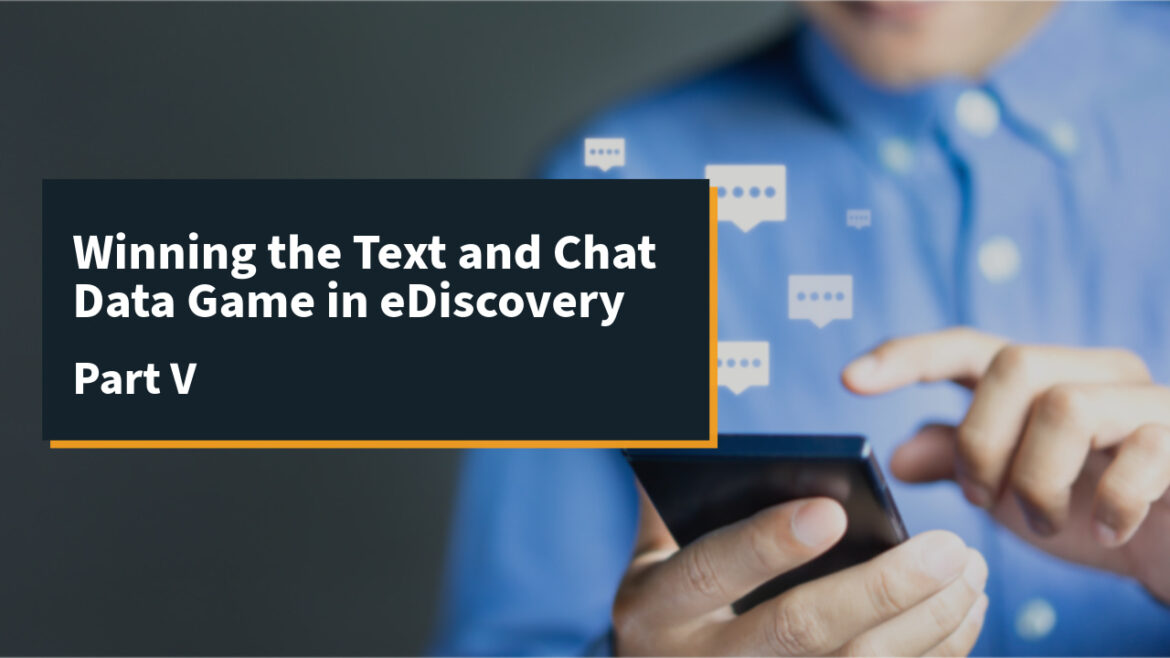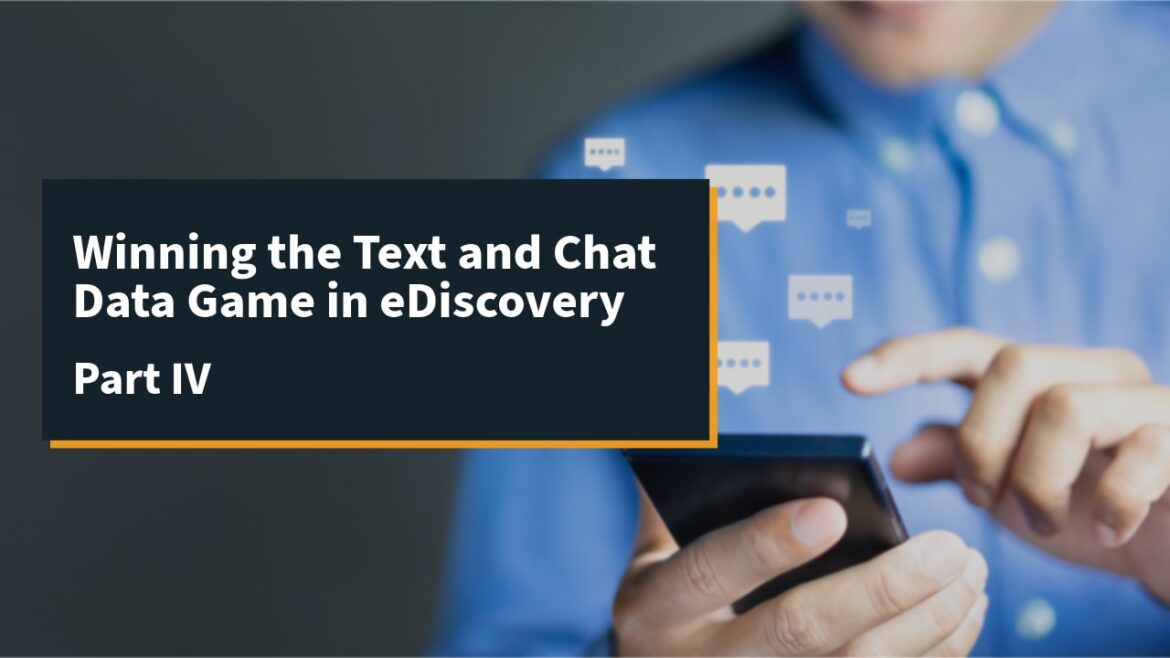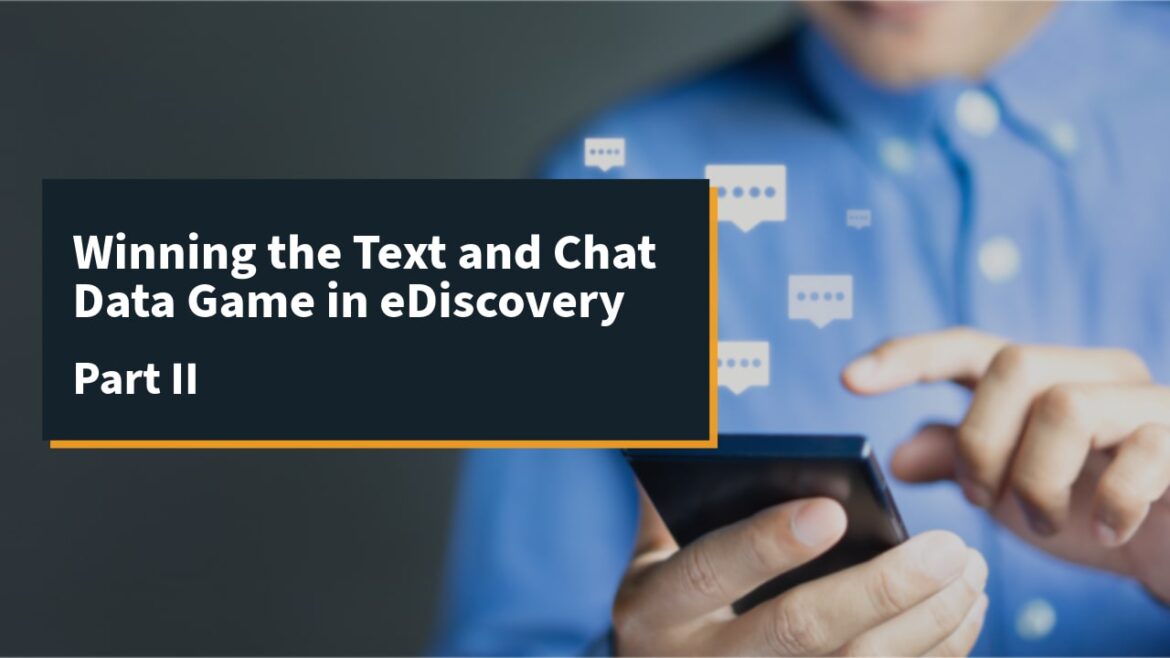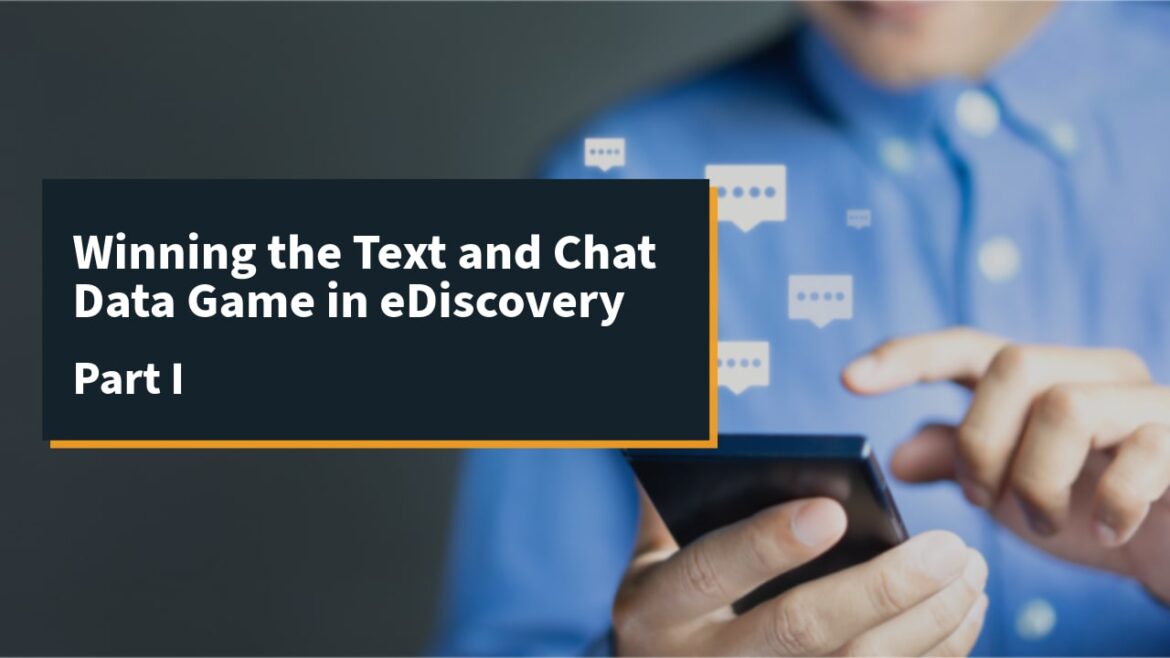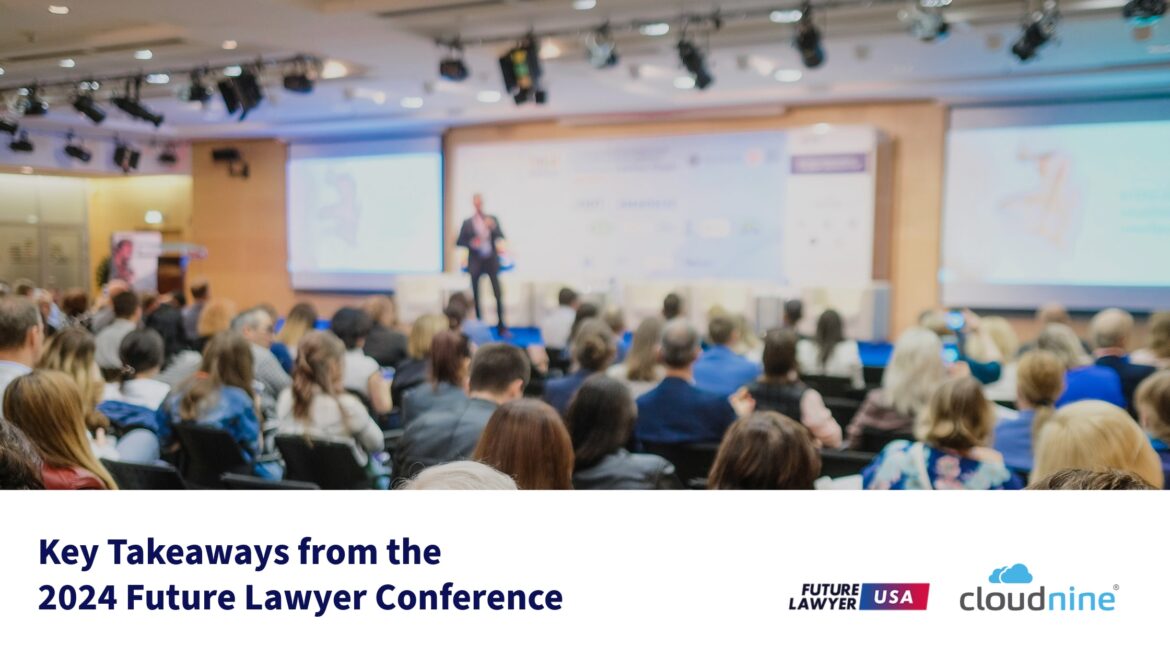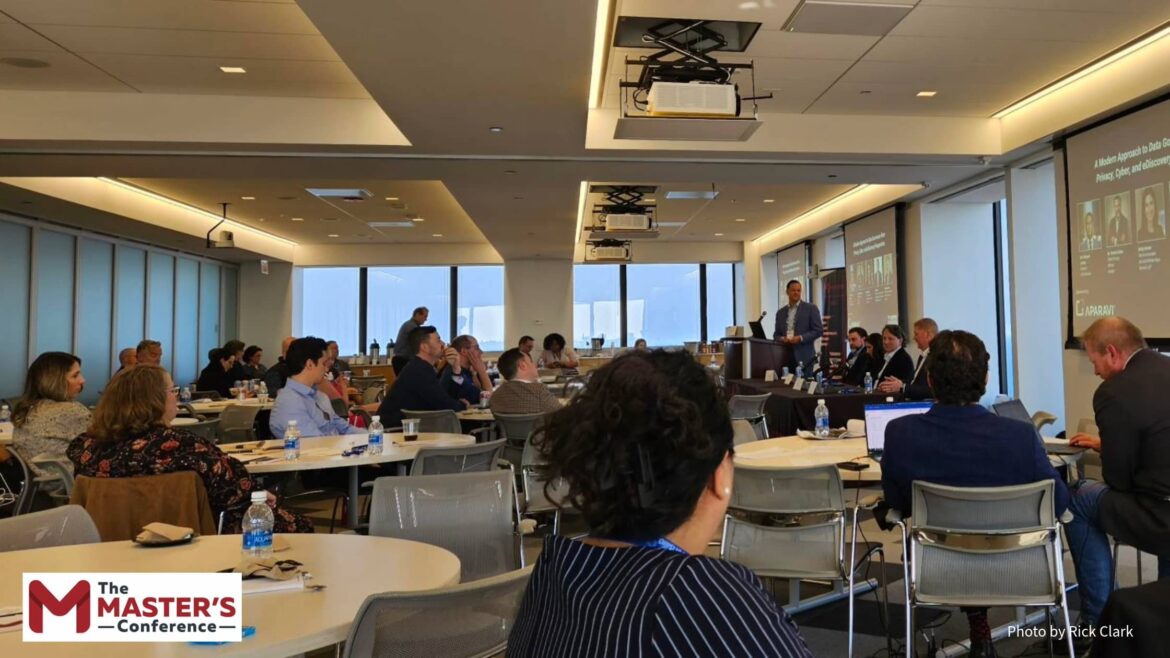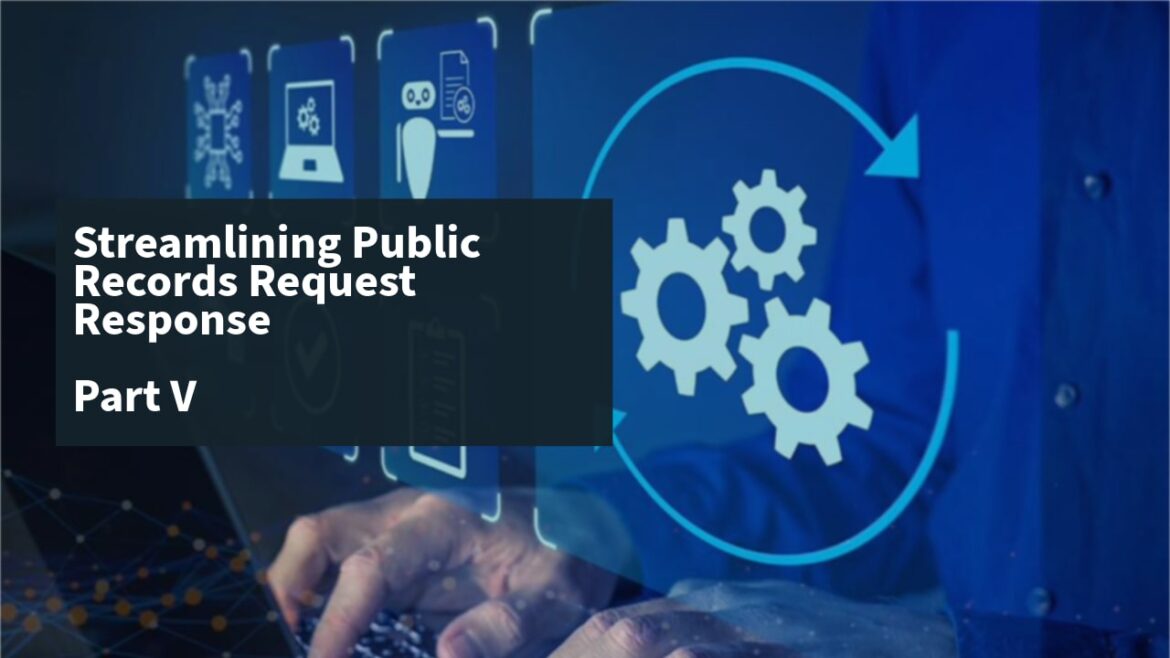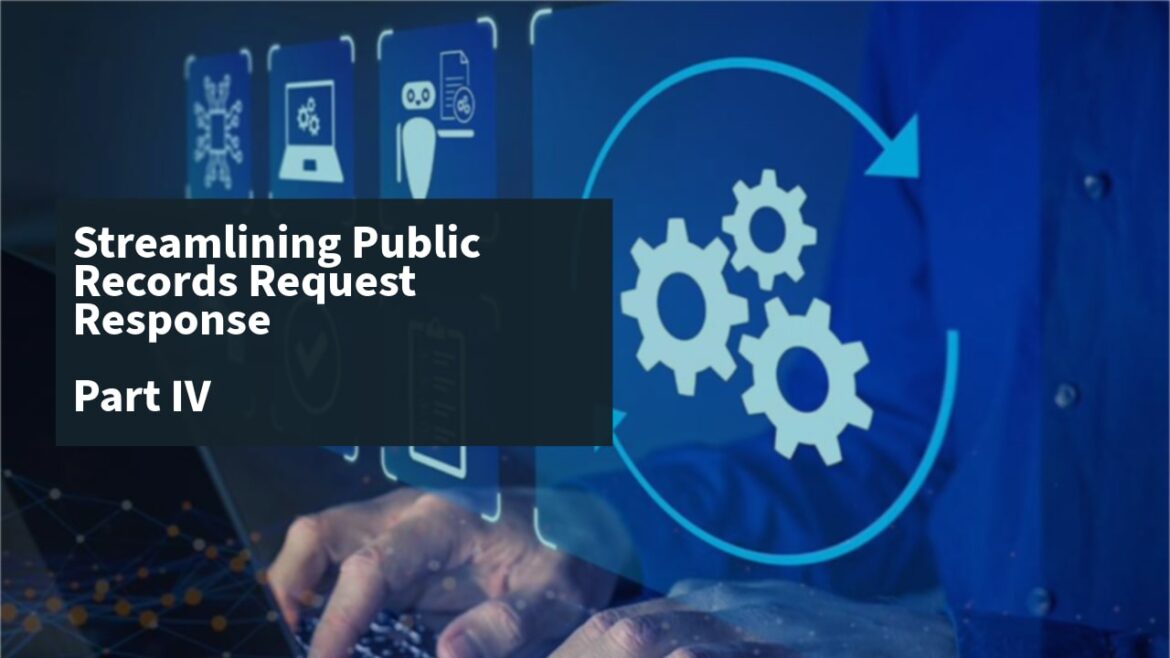By Rick Clark
The Future Lawyer 2024 Conference was held in Boston, MA, and hosted by Ropes & Gray LLP in their Prudential Tower offices. This two-day event hosted private practicing attorneys the first day and corporate in-house personnel the second day.
The law firm day topics hovered mostly on how Generative and Predictive AI are gaining more steam in the legal industry, with the corporate agenda track more focused on change management. What was surprising to me? The general sentiment that Generative AI is still under development but will eventually create incredible solutions for a wide array of legal processes. Potential AI applications are outlined below.
The conference was emceed by Zach Abramowitz, Founder of Killer Whale Strategies, kicked off the conference with opening remarks about the exciting growth of AI in the legal industry. His first and most powerful statement was on just one application of AI, “Legal Ops isn’t outsourcing their legal research questions”: the use of AI in Lexis Nexis and Westlaw has made it easier for in-house teams to do their own legal research rather than traditional outsourcing, and not enough teams are taking advantage of this new way of getting traditional legal work done.
In her keynote, International Legal Technology Association (ILTA) CEO Joy Heath Rush emphasized the value of “Innovation and the Race to be Second.” She highlighted at this conference that coming in second is still a win, contrasting it with the failure of those who merely follow the crowd like lemmings. She discussed the legal industry’s precedent-driven culture, noting that innovation isn’t limited to technology but can also mean improved processes. To innovate effectively, she advised defining success, setting realistic quality levels, valuing quick wins for hypothesis testing, reviewing, and iterating, and accepting limited failure to encourage safe innovation. Her key message: race to be second when it makes sense but avoid being a lemming.
Building an Innovative Legal Workforce
In the “Building an Innovative Legal Workforce – Hiring Strategies and Skills for Private Practice Firms” panel, industry experts shared their insights on fostering innovation within law firms. Josh Rosenzweig of Morgan, Lewis & Bockius LLP emphasized that innovation is about differentiation and driving change across departments. Steve Gluckman of Skillburst, a digital learning company for law firms, highlighted that innovation stems from culture and doesn’t always require a technological component or grand initiatives. Amy Tenney Curren from Morrison & Foerster LLP underscored the importance of a growth mindset and broad thinking, while Madelyn Mateo from Skadden Arps LLP pointed to the necessity of creating a safe space for sharing ideas to encourage a culture shift.
When discussing how firms can empower employees to share innovative ideas, the panel agreed that an open and safe environment is crucial. Gluckman noted that client expectations are evolving, with clients demanding efficiency, effectiveness, and advanced technology and soft skills. Curren added that junior attorneys should be equipped with knowledge beyond traditional lawyering, including business acumen and relationship-building skills. Rosenzweig suggested that firms should also focus on improving operations to meet client needs.
Looking to the future, the panel discussed the evolving landscape of law firms with innovation and hiring. Curren observed a growing interest in technology among law school graduates and the need to adapt to the changing workforce, especially with GenZ. Gluckman proposed eliminating the “lawyer/non-lawyer” terminology to foster a unified firm culture. Mateo emphasized the importance of agility and iterative processes, while Rosenzweig highlighted the value of leveraging external partners to bridge gaps in workforce and technology.
Regarding new job skills, Mateo mentioned the need for expertise in product and project management, data understanding, and implementation. Rosenzweig emphasized the role of Customer Success Managers to support attorneys with technology platforms. The panel also discussed change management as a crucial component of professional development. Curren stressed the importance of aligning change management with the firm’s business strategy, while Gluckman advocated for microlearning and continuous education.
In closing, the panelists shared key insights for building an innovative legal workforce. Rosenzweig advised seeking curious candidates and aligning innovation teams with firm culture. Curren emphasized the importance of intentional planning and identifying champions. Gluckman encouraged embedding innovation throughout a company’s culture, and Mateo highlighted the value of ideas from all levels. Moderator Toby Franklin concluded with a reminder to be intentional about skill development and to look outside the organization for new perspectives.
ABC’s of Legal Products
In the “ABC of Legal Products” session, panelists delved into the evolving landscape of legal services, focusing on Alternative Legal Services Providers, Building New Solutions, and Meeting New Client Expectations. Thomas Hansteen, Co-Founder and Chief Product Officer of legal tech company Etain, moderated the discussion with insights from Joe Davis, Management of Knowledge Management Solutions at Davis Wright Tremaine LLP, Peter Hitson, Director of Legal Project and Practice Management at Carlton Fields, LLP , Kyle Dumont, Sr. Director of Transformation and User Experience at Morgan Lewis & Backius LLP, and Jesse Klee, Practice Innovation Manager at Cleary Gottlieb Steen & Hamilton.
Defining Innovation in Legal Products
Joe Davis emphasized the distinction between the practice and business of law, stressing that legal products should elevate the practice of law and enhance client relationships. Peter Hitson added that products should either simplify lawyers’ work or add client value to drive profitability. Kyle Dumont highlighted the importance of a firm’s brand perception in determining the products needed, while Jesse Klee discussed the balance between addressing business technology issues and maintaining focus on core legal practice.
Triggers and Processes for Implementing New Technology
The panelists debated the buy vs. build approach to legal technology. Hitson mentioned that while traditional sales processes are common, there’s a shift towards proactively defining business requirements before seeking solutions. Dumont noted the importance of understanding organizational culture and making a compelling case to stakeholders for any change. Klee warned against over-collaboration, suggesting a focused initial team for tech rollouts. Davis pointed out that sometimes existing technology can meet needs without new acquisitions.
The discussion turned to what triggers the search for new technology. Klee observed that many initiatives originate from attorneys’ experiences with technology but finding time for strategic planning amid daily work is challenging, as Dumont noted. Hitson recommended engaging with staff to identify challenges directly. Davis highlighted the difficulty of promoting new solutions without initial success, especially in a remote work environment.
Funding and Measuring Success
When it comes to funding and measuring the success of technology implementations, Klee mentioned that budgets often come from IT or specific departments, with metrics like usage and feedback being crucial. Dumont suggested using Internal Net Promoter Scores to gauge success. Hitson emphasized the importance of showing ROI, particularly in the context of alternative fee arrangements. Davis pointed out that attorney satisfaction is a key indicator of a solution’s success, often assessed through direct feedback.
Building vs. Buying Solutions
Finally, the panelists discussed preferences for building or buying solutions. Davis and Hitson preferred buying, noting the practicality of hybrid low-code options. Dumont described it as a spectrum, emphasizing outcome over process and the importance of providing value to clients. Klee expressed a desire to build more but acknowledged the practicality and lower risk of buying, especially with gaps in internal expertise. Dumont concluded that leveraging contractors and automation for iterative development can be effective, reinforcing that law firms should focus on their core competencies.
Overall, the session underscored the need for strategic, client-focused approaches to innovation in legal services, balancing the benefits of building and buying technology solutions while keeping an eye on culture, practical implementation, and measurable success.
Enhancing Litigation with Generative AI: Efficiency, eDiscovery, and Future Prospects
In the “Enhancing Litigation with Generative AI: Efficiency, eDiscovery and Future Prospects” session, Shannon Kirk, Managing Principal at Ropes & Gray, and Maribel Rivera of ACEDS explored the transformative impact of Generative AI (Gen AI) on litigation. Kirk highlighted that Gen AI is set to revolutionize budgeting and staffing in litigation, particularly in document review, which constitutes up to 80% of litigation costs. She raised concerns about how Gen AI will complicate ESI (Electronically Stored Information) protocols and the potential misuse of productions by opposing parties through AI.
Rivera noted the judiciary’s lack of familiarity with eDiscovery technology and their apprehension towards Gen AI and deepfakes. Kirk added that standing orders now often require certifications on the use of AI, which is not yet clearly defined. She shared insights on piloting various platforms for document review, pointing out that while auto-review can be more efficient, large document reviews still face significant cost and choke points—challenges she expects will soon be addressed.
Kirk reminisced about the evolution from manual document review in warehouses to current technologies like TAR (Technology-Assisted Review), predicting that AI will be the next major iteration. Rivera emphasized that attorneys are increasingly becoming storytellers through the use of AI.
When asked if Gen AI will leapfrog TAR or if both will coexist, both experts affirmed that there is room for both technologies. Kirk concluded by stressing the importance of developing ESI protocols and advocating to judges for the necessary adjustments to accommodate these advancements.
Navigating Generative AI and Predictive AI in the Legal Landscape
In the “Navigating Generative AI and Predictive AI in the Legal Landscape: Practical Insights Beyond the Hype” session, industry leaders discussed the practical applications and future potential of AI technologies in legal practice. Chris Haley, Vedika Mehera, James Ding, Dan Rabinowitz, and Nordo Nissi shared their expertise on how AI can be leveraged to enhance efficiency and accuracy in legal tasks.
Nordo Nissi of Goulston & Storrs highlighted the use of Generative AI (Gen AI) for case management tasks, such as analyzing deposition transcripts to identify specific issues and creating custodian profiles. Vedika Mehera, Orrick Labs emphasized AI’s role in legal research, summarizing depositions, and connecting ideas and concepts. James Ding, Draftwise, pointed out that in transactional law, AI helps in summarizing, extracting, and generating contract content, promoting consistency and efficiency. Dan Rabinowitz of Pre-Dicta explained that Predictive AI is uniquely used to predict behavior in court, like how Google serves ads based on user behavior.
Choosing AI Solutions and Implementing Them
The panel discussed how to identify and implement AI solutions. Mehera noted that innovation teams need to work closely with attorneys to build solutions tailored to specific challenges, breaking down big ideas into manageable steps. Nissi suggested examining write-offs to see if AI could help mitigate them. Ding emphasized that solving clients’ problems is key to success, while Mehera added that Gen AI has universal applications. The importance of internal champions was underscored by Nissi, who recommended using prompts like branded swag to remind teams to use the AI platforms. Rabinowitz highlighted the need to reassure attorneys that AI augments rather than replaces their expertise, enhancing case strategy.
From Identification to Adoption
The transition from identifying to adopting AI solutions was another focal point. Nissi stressed the need for internal champions and consistent reminders to encourage platform use. Rabinowitz and Ding both emphasized the importance of showing how AI can solve specific problems to drive adoption. Mehera mentioned that excitement about AI can motivate learning and adoption, while Ding predicted that the advancements in technology over the next five years would be astonishing. Haley added a powerful reminder: “If you don’t like change, you will like irrelevancy even less.”
Looking Ahead: The Impact of AI on Legal Practice
The session concluded with reflections on the broader impact of AI. Haley remarked that while this isn’t the first technological revolution in the legal industry, the principles that got us here will continue to guide us, albeit in unpredictable ways. He also stressed the value of conferences and events in helping legal professionals stay ahead of the curve. As the panelists agreed, AI’s potential to transform the legal landscape is immense, and staying informed and adaptable will be crucial for success.
Change Management for Corporate Legal Teams
In the second day keynote session “Navigating the Winds of Change: Effective Change Management in Corporate Legal Teams,” Kyle Pankratz, VP of Legal Strategy at MasterCard, discussed the critical need for change management within legal departments. Pankratz emphasized that legal teams often function as a “black box,” inherently resistant to change due to their traditional nature and fear of the unknown. This resistance makes effective change management essential for any transformation initiatives.
One of the primary obstacles to implementing change is the ad hoc approach often taken by legal teams. Pankratz argued that this is not a sustainable strategy. Instead, he proposed a method based on empathy, enthusiasm, and execution. By empathizing with team members, demonstrating genuine enthusiasm for the changes, and executing plans efficiently, leaders can ease the transition process. This approach helps to secure early buy-in from the teams affected, which is crucial for maintaining momentum throughout the rollout. As more team members adopt the changes, a positive feedback loop is created, encouraging even greater participation.
Pankratz illustrated his point with a powerful example: a video showing a lone dancer gradually joined by a crowd, symbolizing how initial buy-in can lead to widespread adoption. This example highlights the importance of getting a few people to commit early, as their participation can inspire others to follow.
In summary, effective change management in corporate legal teams requires a strategic approach that considers the audience and culture. By clearly demonstrating the value of the changes and addressing the challenges they solve, leaders can successfully kick off new initiatives and guide their teams through the winds of change.
Change Management in Corporate Legal Teams
In the session “Operating the Change: Navigating Change Management in Corporate Legal Teams,” industry experts shared their insights on adapting to cost structures and implementing new technologies within legal departments. Sam Breen, Legal Counsel Privacy at Philips North America, Frank Yu, Assistant General Counsel at GoDaddy, Martin Petraitis, Executive Vice President and Sr. Deputy General Counsel at Advance, Katya Fisher, Chief Legal Officer at Construction Group, and Derek Mogck, Head of Legal Operations at Munich Re America Services, Inc., provided a comprehensive overview of how their teams navigate change.
Derek Mogck emphasized the importance of aligning technological advancements with the specific needs of the legal department through a process of diagnosis and design. This approach ensures that any new initiatives are strategically relevant. Martin Petraitis highlighted the challenges faced by small legal departments with limited budgets. He pointed out that a tech-forward Chief Legal Officer (CLO) can play a pivotal role in forming committees to explore how AI can enhance processes. Petraitis also underscored the significance of involving legal operations in building contract lifecycle management (CLM) systems and suggested seeking advice from external sources who have undergone similar implementations to gain early buy-in.
Katya Fisher shared her perspective on the future of CLM, suggesting that the focus should shift to plug-ins and integrations rather than completely replacing existing technologies. She argued that incremental enhancements, such as those provided by Microsoft Outlook, can often be more beneficial than disruptive overhauls. Frank Yu agreed on the utility of CLM as a central repository and anticipated the evolution towards a more advanced 2.0 version.
When it comes to upskilling legal teams and driving technology adoption, Mogck introduced the WILL framework: Why, Interest, Look, and Lean In. He advised starting with understanding the strategic alignment (“Why”), identifying team members’ interests (“Interest”), learning from other teams’ experiences (“Look”), and embracing new technologies proactively (“Lean In”). Yu added that effective change management involves recognizing the various personality types within legal teams and addressing their specific concerns. Understanding that change management is essentially pain management can aid in crafting effective change proposals.
Sam Breen cautioned against the “lift and shift” approach, which can obscure the challenges (“pain train”) associated with implementing changes. Instead, a transparent and well-structured approach is necessary to ensure a smooth transition and adoption of new technologies.
In summary, navigating change management in corporate legal teams involves strategic alignment, incremental technological enhancements, comprehensive upskilling, and a keen understanding of team dynamics. By following these guidelines, legal departments can effectively manage change and drive innovation.
In the recent panel on “Maximizing Legal Efficiency: Strategies for Flexibility and Innovation,” industry leaders Kiran Mallavarapu (Executive Vice President, Legal Operations at Liberty Mutual Insurance), Sara Ann Ludwiszewski (Legal Shared Services at Salesforce), Kate Corrie (General Counsel at Comply360/Vistair), Colleen E. Freeman (VP Global Litigation at UnitedLex), and Shannon Moesaa (VP Commercial and Healthcare Compliance Counsel at Karuna Therapeutics) discussed the crucial role of innovation and technology in modern legal departments.
Focus on Innovation and Technology
Kate Corrie emphasized that legal departments must look beyond their own scope and consider the broader organization to keep pace with change. As business operations increasingly rely on mobile technology, legal teams need to ensure they can respond flexibly and efficiently to business objectives. Colleen Freeman highlighted the rise of remote work, which has amplified the role of Alternative Legal Service Providers (ALSPs) as partners to in-house legal teams. ALSPs help vet new technologies, saving time and resources for in-house departments. Sara Ann Ludwiszewski shared how Salesforce’s legal operations leverage their platform for comprehensive project management, from intake to completion, while enabling management to track project statuses effectively. Shannon Moesaa noted the importance of aligning legal innovations with corporate goals, citing the use of chatbots to manage requests as an example of leveraging emerging technologies for flexibility and efficiency.
Prioritizing Innovation
When it comes to prioritizing innovation, Shannon Moesaa suggested focusing on low-hanging fruit and initiatives that simplify processes, such as setting up online forms to reduce time spent on requests. Creating roadmaps for infrastructure development, spanning one to three years and beyond, helps guide these efforts. Sara Ann Ludwiszewski pointed out that prioritization often depends on who is requesting the technology or service, with requests from the C-suite typically taking precedence.
Innovation in Corporate In-House Departments
Kate Corrie defined innovation as creatively solving problems, sometimes using existing resources rather than adopting new technologies. Understanding the tools already in place can often lead to effective solutions. Shannon Moesaa added that it’s essential to understand problems from various perspectives—legal, compliance, business—and start with small tweaks. Sara Ann Ludwiszewski noted that sometimes innovation involves identifying and discontinuing practices that no longer serve the organization effectively.
Adapting to Change
Colleen Freeman underscored the importance of agility in regulated industries, where compliance requirements frequently change. Leveraging tools and processes, such as Generative AI, can aid in updating policies and procedures swiftly in response to new regulations.
In summary, the panelists agreed that the key to maximizing legal efficiency lies in embracing both technological advances and strategic innovation. By prioritizing initiatives that align with broader business goals and starting with manageable changes, legal departments can enhance their flexibility and responsiveness, driving greater efficiency and effectiveness.
Conclusion
As you can see, the two-day conference covered a lot of ground from artificial intelligence, legal operations, eDiscovery, and change management. Typically, I attend eDiscovery conferences where the content is near-exclusively focused on how to modernize processes in AI and data discovery. It was enlightening to be exposed to many other aspects of legal technology, including leading innovation and change management initiatives, and the practical application of GenAI for legal.
Do you want to attend an upcoming legal innovation conference and live in the New York City area? CloudNine and Integreon will be hosting an ILTA Roadshow at Morgan Lewis on July 23 on large scale review and handling modern data, and will also be attending the Master’s Conference in New York July 24-25. Contact us if you would like to learn more and receive a complimentary pass to either event.

